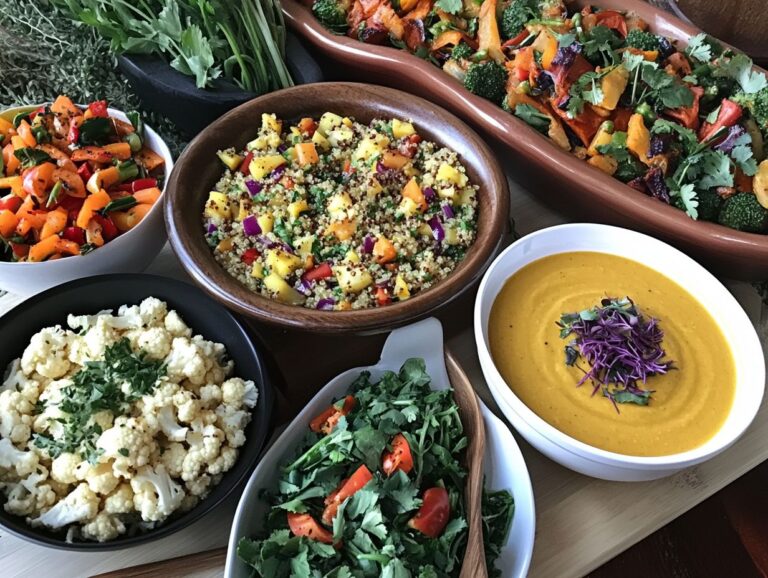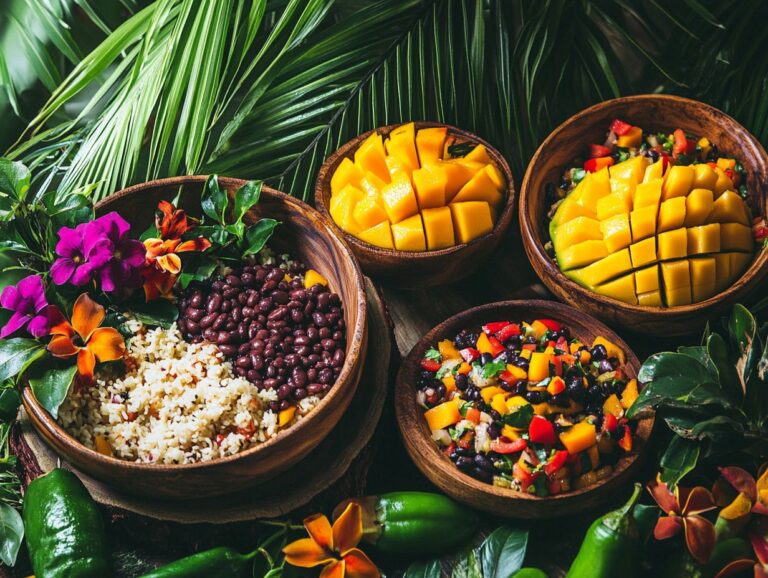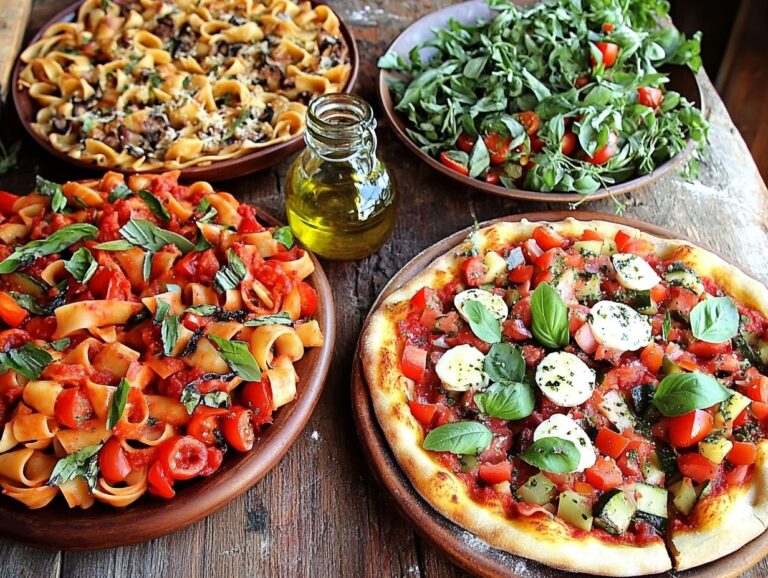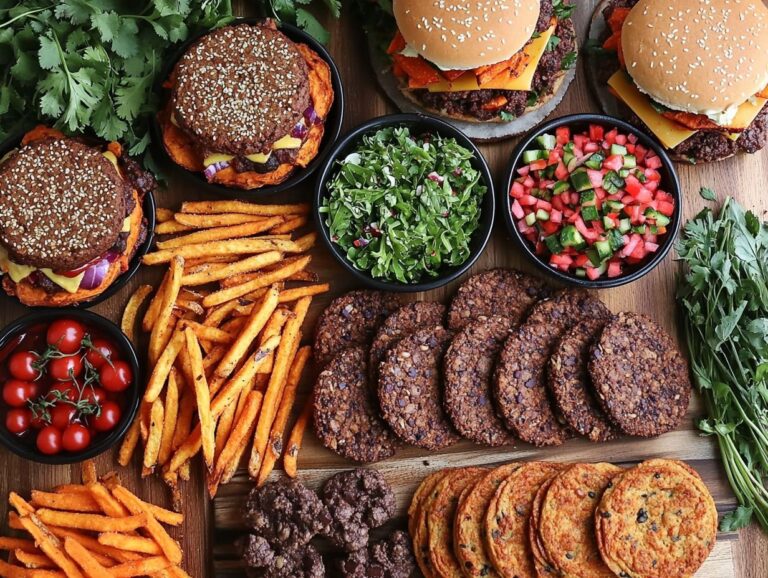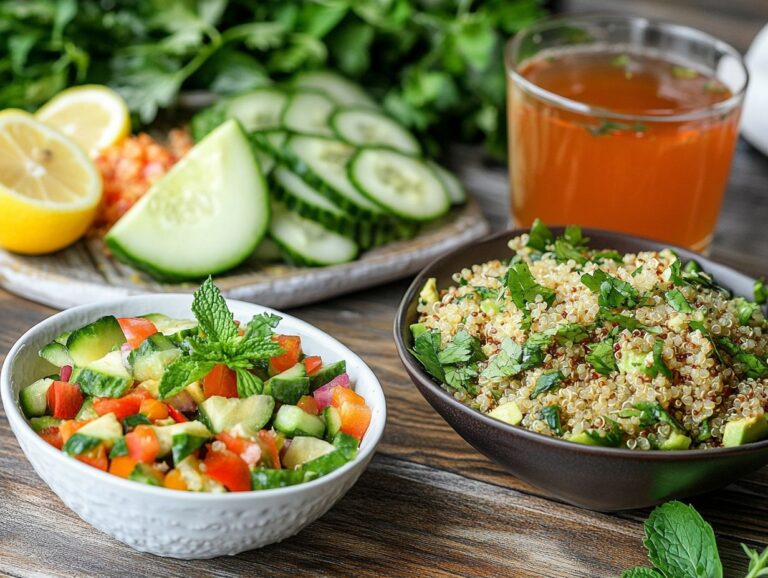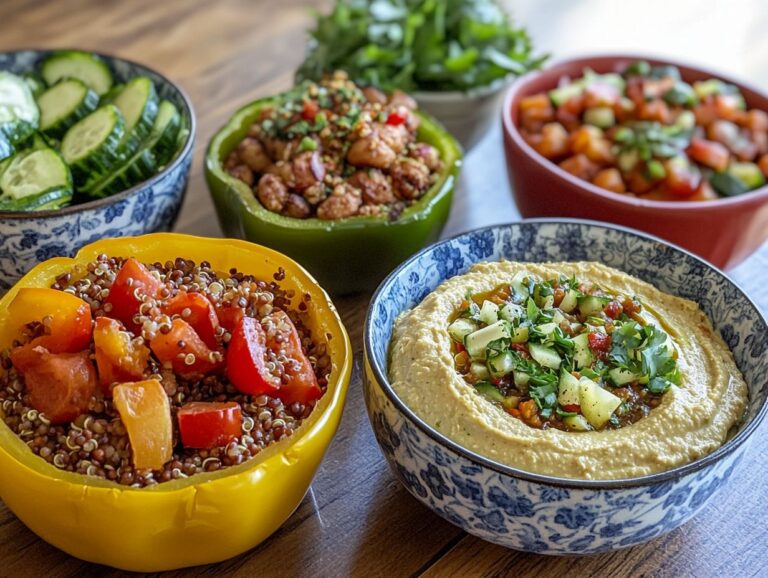Scandinavian cuisine is characterized by an emphasis on fresh, simple ingredients that showcase the natural flavors of the region. This cuisine has unique aspects, particularly in its vegan offerings, where essential ingredients serve as staples of this delightful culinary tradition. From traditional vegan recipes that reflect Nordic characteristics to modern variations that add a twist to classic dishes, there is something to satisfy every palate. Additionally, the blog offers tips for incorporating these delicious meals into your diet, along with the health and environmental benefits of embracing a vegan Scandinavian lifestyle. Discover how to bring these vibrant flavors to your table!
What Makes Scandinavian Cuisine Unique?
 Scandinavian cuisine is distinguished by its rich history, diverse ingredients, and unique flavors, all shaped by the region’s geography and climate. One iconic aspect of this culinary tradition is the Fat Tuesday celebration in Sweden, which features the Semla bun a sweet pastry made with wheat flour, almond filling, and topped with whipped cream and a light sugar coating. Scandinavian cuisine typically emphasizes the use of fresh, local produce and focuses on comfort food ingredients. Healthy, wholesome components are at the heart of the Scandinavian diet. Traditional pancakes, such as Aebleskiver from Denmark, Raggmunk from Sweden, and Pannukakku from Finland, are commonly served for breakfast, lunch, or dinner, alongside hearty soups and stews that often incorporate local meats and vegetables. In addition, Swedish pancakes offer a sweet twist, often paired with lingonberry sauce to enhance their flavor. Additionally, Scandinavian cuisine boasts a long-standing tradition of baking sweets and other baked goods, ranging from Christmas cookies to festive birthday cakes, making these treats a staple at family dinners and celebrations. Holiday baking often includes specialities like butter cookies and spiced pear cake, which are beloved during festive gatherings.
Scandinavian cuisine is distinguished by its rich history, diverse ingredients, and unique flavors, all shaped by the region’s geography and climate. One iconic aspect of this culinary tradition is the Fat Tuesday celebration in Sweden, which features the Semla bun a sweet pastry made with wheat flour, almond filling, and topped with whipped cream and a light sugar coating. Scandinavian cuisine typically emphasizes the use of fresh, local produce and focuses on comfort food ingredients. Healthy, wholesome components are at the heart of the Scandinavian diet. Traditional pancakes, such as Aebleskiver from Denmark, Raggmunk from Sweden, and Pannukakku from Finland, are commonly served for breakfast, lunch, or dinner, alongside hearty soups and stews that often incorporate local meats and vegetables. In addition, Swedish pancakes offer a sweet twist, often paired with lingonberry sauce to enhance their flavor. Additionally, Scandinavian cuisine boasts a long-standing tradition of baking sweets and other baked goods, ranging from Christmas cookies to festive birthday cakes, making these treats a staple at family dinners and celebrations. Holiday baking often includes specialities like butter cookies and spiced pear cake, which are beloved during festive gatherings.
Key Ingredients in Vegan Scandinavian Cooking
The key ingredients in vegan Scandinavian cooking are abundant in fresh, seasonal vegetables, reflecting the region’s culinary philosophy while promoting a plant-forward diet. Scandinavian-inspired dishes often feature components like roasted beets and pickled cucumbers to add depth and color to meals. Staples such as hearty grains, root vegetables, legumes, and fresh herbs contribute to nutritious dishes that are both flavorful and satisfying. For example, oatmeal bowls can serve as a nourishing breakfast option, while golden beet soup makes for a hearty lunch. Vegetarian quinoa is another versatile ingredient that can be used in various recipes. Additionally, a variety of savory soups allows anyone adopting a vegan diet to savor the rich flavors of Scandinavian cuisine with ease. Creamy split pea soup is a comforting option that highlights the simple ingredients of this culinary tradition.
Fresh and Simple Ingredients to Use
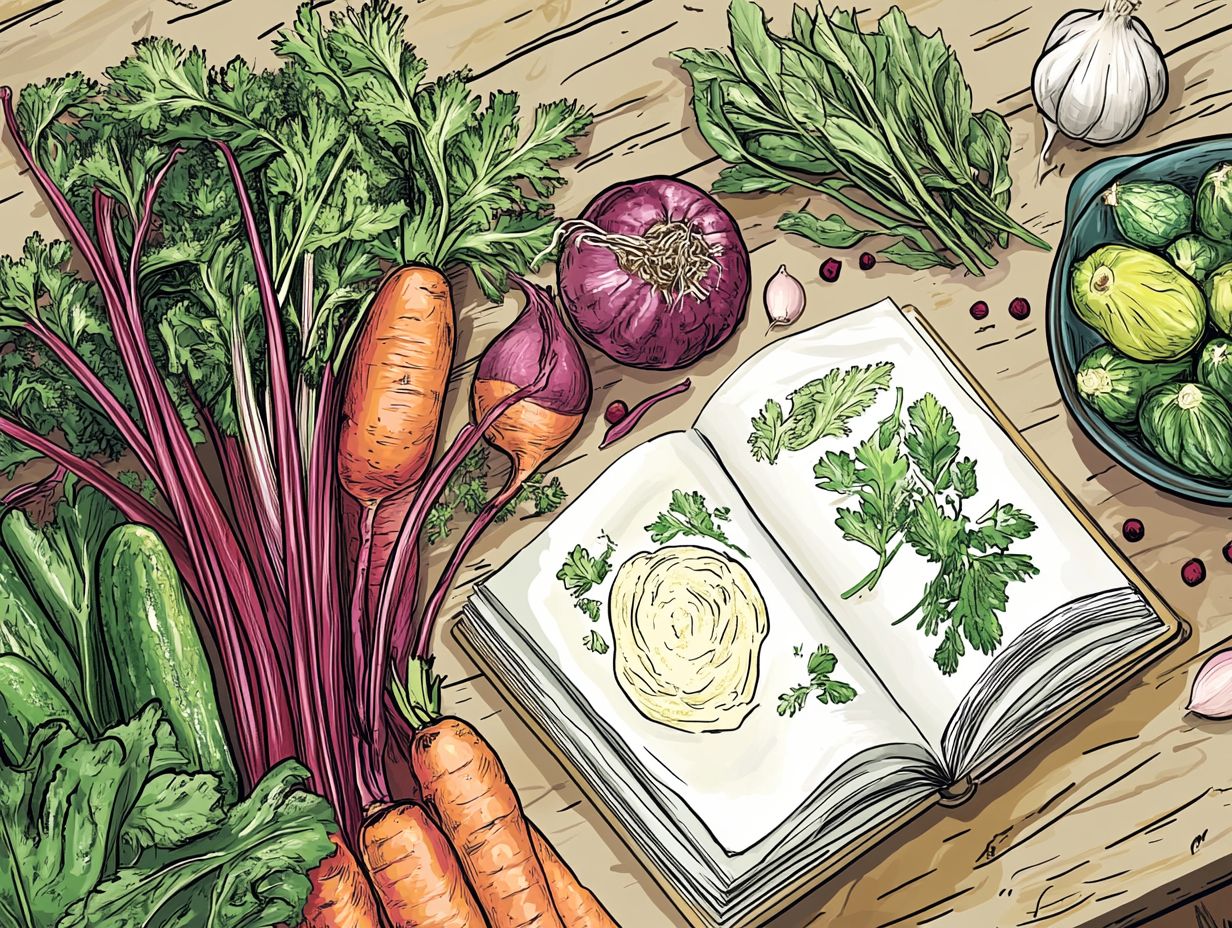 Scandinavian cooking emphasizes fresh and simple ingredients, showcasing seasonal produce that is both healthy and flavorful. Ingredients such as roasted beets and pickled cucumbers add vibrant color and taste, while versatile options like vegetarian quinoa and creamy roasted cauliflower serve as bases for various meals. Utilizing simple yet high-quality ingredients not only enhances flavor but also aligns with the healthy eating ethos prevalent in many Scandinavian dishes. Incorporating elements like fresh dill, known for its fragrant qualities, can elevate a salad or brighten a fish dish, making it both delicious and visually appealing. Seasonal fruits such as lingonberries and cloudberries are commonly used in jams and sauces, adding a delightful tartness to savory main courses. Root vegetables like potatoes and carrots are staples in Scandinavian cuisine, providing heartiness and can be prepared as roasted or mashed side dishes that offer warmth and comfort. Hasselback potato rounds out the list as a popular choice, combining crispy and tender textures for a satisfying dish. These ingredients not only embody the essence of Scandinavian cuisine but also promote a balanced diet rich in vitamins and minerals.
Scandinavian cooking emphasizes fresh and simple ingredients, showcasing seasonal produce that is both healthy and flavorful. Ingredients such as roasted beets and pickled cucumbers add vibrant color and taste, while versatile options like vegetarian quinoa and creamy roasted cauliflower serve as bases for various meals. Utilizing simple yet high-quality ingredients not only enhances flavor but also aligns with the healthy eating ethos prevalent in many Scandinavian dishes. Incorporating elements like fresh dill, known for its fragrant qualities, can elevate a salad or brighten a fish dish, making it both delicious and visually appealing. Seasonal fruits such as lingonberries and cloudberries are commonly used in jams and sauces, adding a delightful tartness to savory main courses. Root vegetables like potatoes and carrots are staples in Scandinavian cuisine, providing heartiness and can be prepared as roasted or mashed side dishes that offer warmth and comfort. Hasselback potato rounds out the list as a popular choice, combining crispy and tender textures for a satisfying dish. These ingredients not only embody the essence of Scandinavian cuisine but also promote a balanced diet rich in vitamins and minerals.
Traditional Vegan Scandinavian Dishes
Traditional vegan Scandinavian dishes honor the region’s culinary heritage by adapting beloved recipes to be plant-based while preserving their unique flavors and textures. Vegan Nordic cuisine emphasizes plant-based recipes that stay true to traditional dishes while offering new interpretations. One example is the classic Hasselback potato, sliced to create a fan shape, seasoned with herbs, and baked to perfection. These potatoes are versatile enough to be served at a family dinner or alongside a festive dessert. Swedish pancakes can also be prepared using plant-based dairy products and eggs, resulting in a light, fluffy texture. These pancakes pair excellently with lingonberry sauce for a traditional taste. Additionally, creamy roasted cauliflower serves as a hearty side dish that complements a variety of meals. These examples demonstrate how traditional Nordic flavors can be maintained in a vegan format, making these recipes ideal for family dinners. Whether it’s a simple pita bread topped with roasted vegetables or a sophisticated almond tart, vegan recipes ensure everyone can enjoy Nordic flavors.
Recipes for Classic Dishes
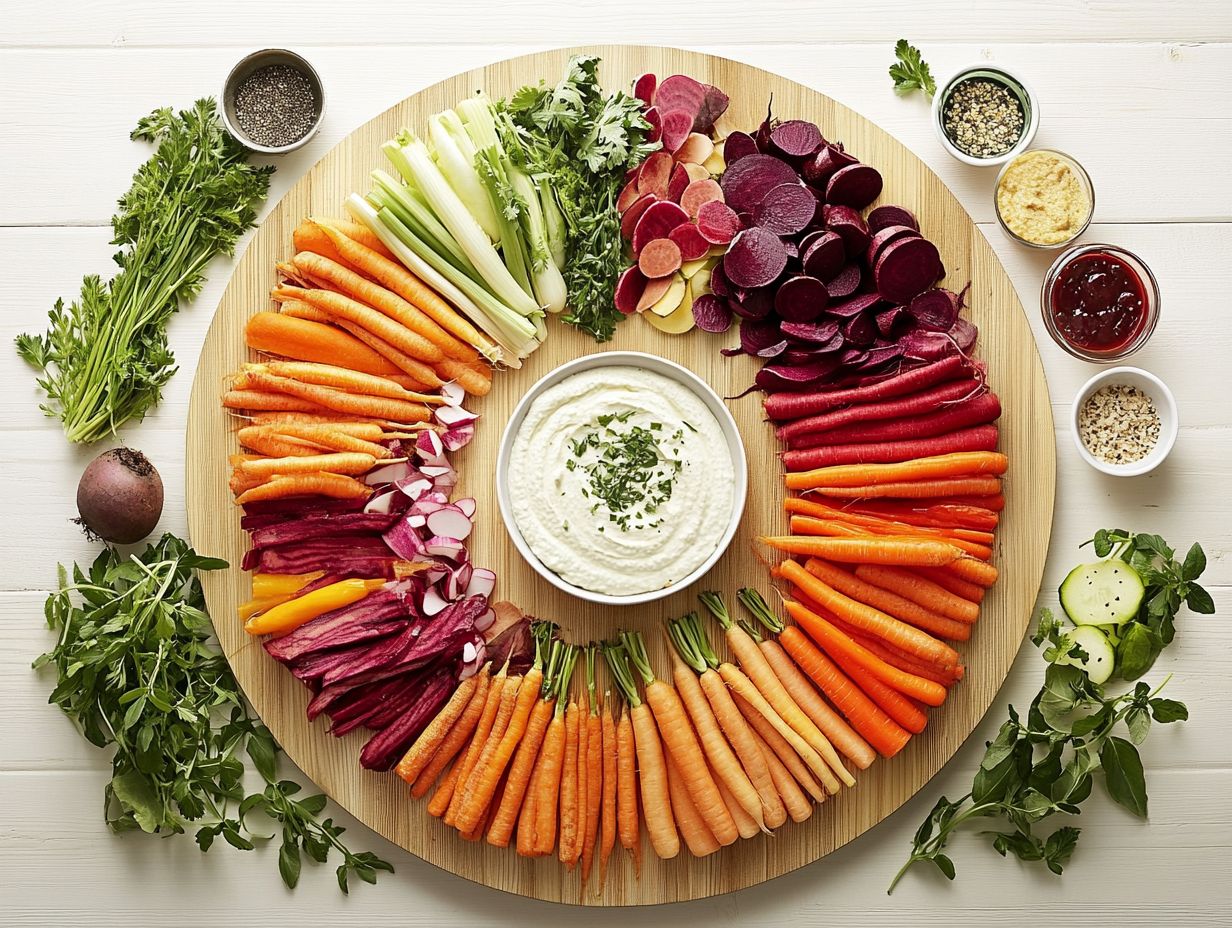 Recipes for classic Scandinavian dishes have been adapted for vegan diets, allowing everyone to enjoy the flavors of the region’s traditional meals. For instance, a chocolate cake can be made vegan by using almond flour and natural sweeteners. Similarly, the filling of an almond tart can be replaced with plant-based ingredients that offer a rich, nutty flavor. Another delightful option is a spiced pear cake, which combines seasonal fruits with warm spices to create a perfect dessert for festive occasions and family dinners, demonstrating that simple recipes can also be delicious. These adaptations make it easy to incorporate traditional flavors into modern diets, utilizing fresh and simple ingredients. One heartwarming staple that has transitioned to a plant-based version is Swedish meatballs, which can be made from lentils or chickpeas mixed with herbs and spices. These are often enhanced with a traditional Swedish meatball sauce, offering a savory depth. This savory dish pairs wonderfully with creamy mashed potatoes made from almond or coconut milk. Additionally, Finnish rye bread is another classic Scandinavian dish that can easily be made vegan by substituting traditional dairy ingredients with plant-based alternatives. For example, flax seeds can serve as an egg substitute, enhancing the flavor and texture while staying true to the dish’s essence. These recipes not only preserve the spirit of Scandinavian cooking but also ensure that everyone can savor these cherished flavors, regardless of their dietary preferences. From easy recipes to more complex dishes, these vegan options provide nutritious meals that highlight natural tastes.
Recipes for classic Scandinavian dishes have been adapted for vegan diets, allowing everyone to enjoy the flavors of the region’s traditional meals. For instance, a chocolate cake can be made vegan by using almond flour and natural sweeteners. Similarly, the filling of an almond tart can be replaced with plant-based ingredients that offer a rich, nutty flavor. Another delightful option is a spiced pear cake, which combines seasonal fruits with warm spices to create a perfect dessert for festive occasions and family dinners, demonstrating that simple recipes can also be delicious. These adaptations make it easy to incorporate traditional flavors into modern diets, utilizing fresh and simple ingredients. One heartwarming staple that has transitioned to a plant-based version is Swedish meatballs, which can be made from lentils or chickpeas mixed with herbs and spices. These are often enhanced with a traditional Swedish meatball sauce, offering a savory depth. This savory dish pairs wonderfully with creamy mashed potatoes made from almond or coconut milk. Additionally, Finnish rye bread is another classic Scandinavian dish that can easily be made vegan by substituting traditional dairy ingredients with plant-based alternatives. For example, flax seeds can serve as an egg substitute, enhancing the flavor and texture while staying true to the dish’s essence. These recipes not only preserve the spirit of Scandinavian cooking but also ensure that everyone can savor these cherished flavors, regardless of their dietary preferences. From easy recipes to more complex dishes, these vegan options provide nutritious meals that highlight natural tastes.
Modern Twists on Scandinavian Favorites
Modern twists on Scandinavian favorites showcase the adaptability and creativity of contemporary cooking, allowing traditional flavors to be preserved and developed into recipes that align with today s healthy diets. These innovative takes often include healthy snacks such as energy bites and colorful salads, appealing to both traditionalists and those looking for something new. These modern adaptations of Scandinavian dishes place a strong emphasis on plant-based options. Dishes such as Vegan Hasselback potatoes, energy snacks made from dates, oats, nuts, and seeds, as well as energy drinks and smoothies featuring traditional ingredients like lingonberry, cloudberry, or sea buckthorn, are gaining popularity. Homemade granola with cardamom and sweet strawberries can also offer a Nordic twist to your breakfast routine. These adaptations often retain the essence of Scandinavian cuisine while accommodating diverse dietary preferences, offering delicious recipes that complement the cozy meals and family gatherings for which Scandinavian cuisine is renowned.
Innovative and Creative Recipes
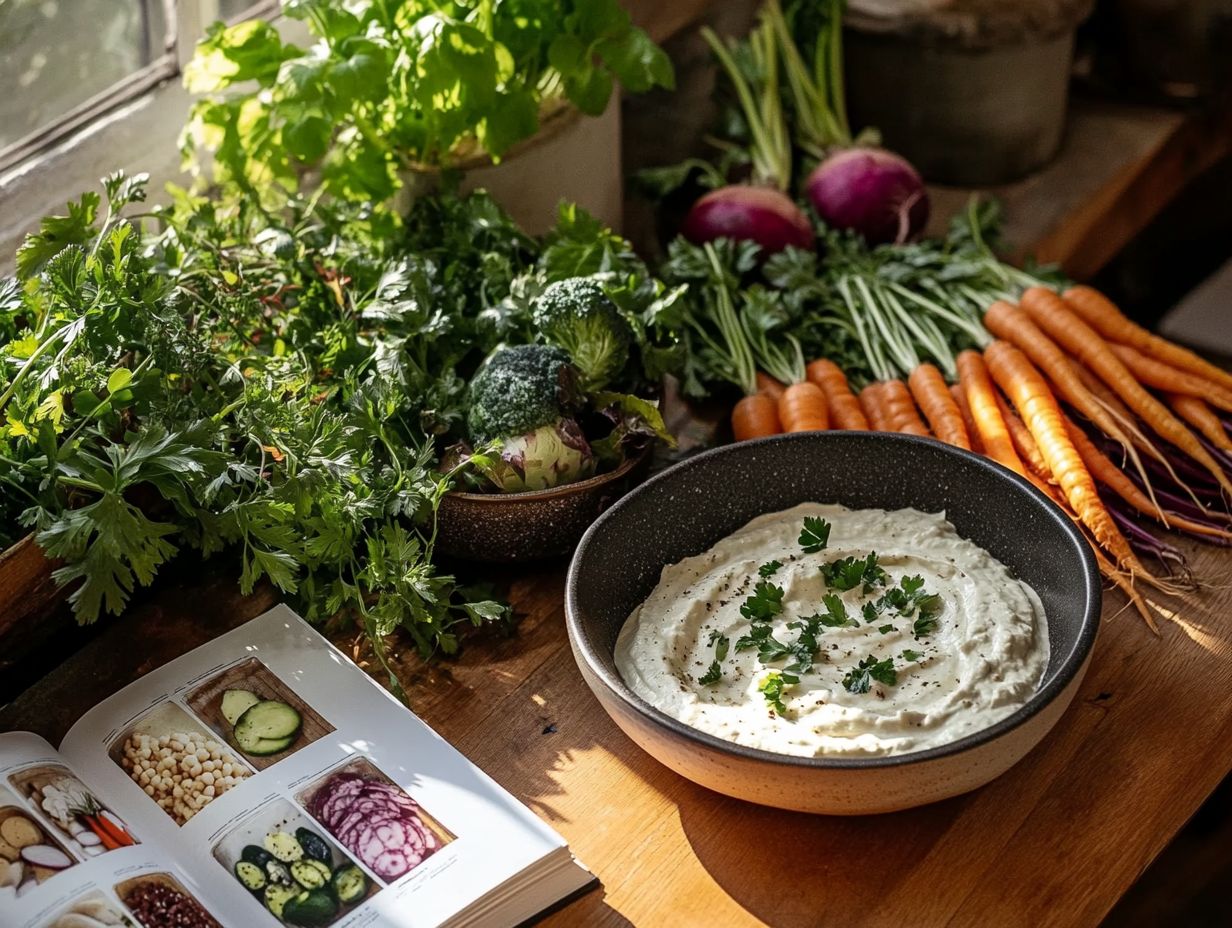 Scandinavian cuisine features innovative and creative recipes that blend traditional and modern preparations, enhanced by unexpected ingredients, flavors, and cooking techniques. For instance, dishes like homemade granola showcase Nordic flavors such as cardamom, while vibrant salads incorporate seasonal vegetables and fruits that are both nutritious and visually appealing. Scandinavian kitchen staples like foraged foods and fresh-picked berries elevate these dishes with authentic flavors. Holiday baking includes delightful treats like spiced pear cake and butter cookies, which have been adapted to include plant-based alternatives to traditional recipes. The evolving nature of Scandinavian cuisine has led to unique combinations of textures and flavors, often drawing inspiration from historical food traditions. For example, fermented ingredients and pickled vegetables are frequently used to elevate flavors. These eclectic choices ensure that dishes like creamy roasted cauliflower or rye bread maintain their distinctive taste. Pickled radishes might add a satisfying crunch to a marinated salmon salad, while fermented lingonberry sauce can serve as a flavorful substitute for fresh berries in rye porridge. These additions bring a delightful twist to simple ingredients, ensuring every meal is both memorable and delicious. The creative presentation of these dishes, such as serving gravlax with beetroot puree and mustard sauce or crafting a stunning tart with lingonberries and an almond flour crust, highlights the artistry involved in modern Scandinavian cuisine. By utilizing local and sustainable products, these innovative dishes not only appeal to those who appreciate the flavors of Scandinavia but also resonate with a broader audience that values environmentally friendly practices. Scandinavian-inspired dishes thus offer a sustainable way to enjoy both traditional and contemporary flavors.
Scandinavian cuisine features innovative and creative recipes that blend traditional and modern preparations, enhanced by unexpected ingredients, flavors, and cooking techniques. For instance, dishes like homemade granola showcase Nordic flavors such as cardamom, while vibrant salads incorporate seasonal vegetables and fruits that are both nutritious and visually appealing. Scandinavian kitchen staples like foraged foods and fresh-picked berries elevate these dishes with authentic flavors. Holiday baking includes delightful treats like spiced pear cake and butter cookies, which have been adapted to include plant-based alternatives to traditional recipes. The evolving nature of Scandinavian cuisine has led to unique combinations of textures and flavors, often drawing inspiration from historical food traditions. For example, fermented ingredients and pickled vegetables are frequently used to elevate flavors. These eclectic choices ensure that dishes like creamy roasted cauliflower or rye bread maintain their distinctive taste. Pickled radishes might add a satisfying crunch to a marinated salmon salad, while fermented lingonberry sauce can serve as a flavorful substitute for fresh berries in rye porridge. These additions bring a delightful twist to simple ingredients, ensuring every meal is both memorable and delicious. The creative presentation of these dishes, such as serving gravlax with beetroot puree and mustard sauce or crafting a stunning tart with lingonberries and an almond flour crust, highlights the artistry involved in modern Scandinavian cuisine. By utilizing local and sustainable products, these innovative dishes not only appeal to those who appreciate the flavors of Scandinavia but also resonate with a broader audience that values environmentally friendly practices. Scandinavian-inspired dishes thus offer a sustainable way to enjoy both traditional and contemporary flavors.
Tips for Incorporating Vegan Scandinavian Cooking into Your Diet
Incorporating vegan Scandinavian cooking into your diet is both easy and rewarding, allowing you to enjoy delicious meals while meeting your dietary needs. With options ranging from quick dinners to festive desserts, embracing this culinary style is convenient and satisfying. By preparing quick dinners that feature plant-based proteins and seasonal vegetables, you can create satisfying meals without spending hours in the kitchen. Oatmeal bowls or pita bread filled with roasted vegetables are just a few examples of how convenient these meals can be. Additionally, healthy snacks such as energy bites made from nutritious ingredients can provide you with the fuel you need throughout the day.
How to Adapt Recipes and Find Ingredients
Adapting recipes and sourcing ingredients for vegan Scandinavian cooking requires an understanding of ingredient substitution and knowledge of local markets for fresh produce. By utilizing foraged foods and simple pantry ingredients, it is possible to create flavors that are authentic or similar to traditional dishes while preserving the integrity of the original recipes. Exploring options like homemade granola or healthy raw balls can add new dimensions to your meals. Whether using almond filling for a vegan Semla or saffron for Lussekatter, knowing where to find these ingredients is essential for successful vegan cooking in the Scandinavian kitchen. Specialty ingredients like these can transform simple recipes into culinary masterpieces. Enhancing the culinary experience can be as straightforward as visiting farmers’ markets to obtain seasonal vegetables like root crops and berries directly from local producers. Exploring alternative options such as nut-based cheeses or aquafaba for creamy textures can also elevate traditional flavors without compromising ethical standards. Online communities and specialty stores dedicated to plant-based diets serve as valuable resources for locally sourced ingredients that align with vegan values. Engaging with local food cooperatives not only provides access to fresh produce but also offers opportunities to learn about preserving and refining the use of local herbs and spices, enriching the overall dining experience while promoting sustainable eating practices.
Benefits of a Vegan Scandinavian Diet
The advantages of a vegan Scandinavian diet, featuring Scandinavian-inspired dishes and plant-based recipes, extend beyond individual health; they also offer significant benefits to the environment and overall well-being. These easy recipes often include colorful salads, cozy meals, and nutritious meals that are both delicious and sustainable. This diet emphasizes plant-based ingredients, such as roasted beets, creamy roasted cauliflower, and pickled cucumbers, which contribute to the creation of nutritious meals rich in essential vitamins and minerals, while simultaneously reducing the demand for animal products that harm the environment. Additionally, adopting a vegan lifestyle inspired by a Scandinavian diet can lead to healthier outcomes, highlighting the positive effects of dietary patterns on both personal and planetary health. Incorporating simple ingredients like oatmeal bowls, creamy split pea, and golden beet soup can make this transition enjoyable and effective.
Health Benefits and Environmental Impact
The health benefits and environmental impact of a vegan Scandinavian diet are significant, highlighting how plant-based, nutritious meals, such as energy bites and energy snacks, can promote health while supporting the environment. Nutritionally, a vegan Scandinavian diet offers substantial advantages, as consuming plant-based dishes reduces the risk of chronic diseases such as heart disease, diabetes, obesity, and certain cancers. These benefits are particularly crucial in Scandinavian countries, where the healthcare burden and costs associated with chronic diseases are increasing. Traditionally, the diets in Scandinavian countries are high in animal protein. Transitioning to a vegan Scandinavian diet represents a significant shift that can lessen the environmental impact in several ways.
- By eliminating all animal-based products, a vegan Scandinavian diet reduces an individual’s carbon footprint and the greenhouse gas emissions linked to animal production, a process often involving beef croquette or traditional pancakes.
- Additionally, this diet can conserve water resources by up to 50% by eliminating the water-intensive practices associated with animal farming, which often includes items such as Swedish meatball sauce and Swedish pancake.
- Furthermore, a vegan Scandinavian diet contributes to the conservation of natural resources by reducing the need for energy-intensive fertilizer and feed production, as well as the requirements for animal housing and transportation to slaughterhouses. This diet can also include delightful options like cardamom granola, homemade granola, and almond tart.
For those interested in exploring more about the vegan Scandinavian diet, K33 Kitchen offers insightful resources on crafting such dishes, from savory soups to holiday baking.
